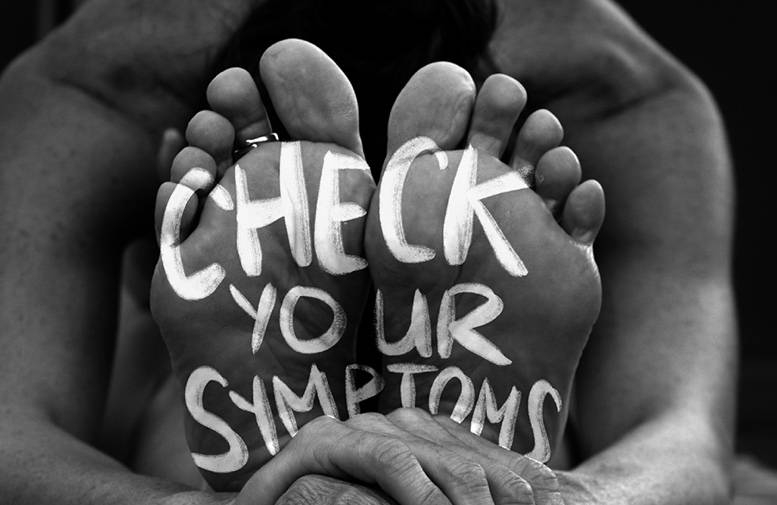How to ask your doctor about iron deficiency
Don’t know where to start when it comes to discussing the heavy feeling of fatigue or racing heart episodes you may have been experiencing, which could indicate iron deficiency? You’re not alone. A survey found that people put up with symptoms for an average of nine months1 before seeking their doctor’s help.
If you’re fed up with feeling like you’re running on empty, it’s time to get some professional help. Your doctor will discuss your medical history and symptoms, plus run blood tests to discover if you are iron deficient or anemic.

Checklist: what will you need to share with your doctor?
To get the most out of your appointment, use our checklist to know what information to prepare and share with your doctor:
- What symptoms you’ve been experiencing and how long for. When did they start? How do they affect your daily life?
- If you’re suffering from fatigue, is it better or worse after sleeping or exercise?
- What medications are you currently taking.
- Existing risk factors for iron deficiency. These include coeliac disease, chronic heart/kidney disease, cancer and inflammatory bowel disease.
- Have you recently spent time in hospital and why?
How is iron deficiency treated?
The good news is that this common condition and iron deficiency anemia can be remedied. Depending on your level of iron deficiency and any other medical conditions you have, your doctor may choose to prescribe iron supplementation either courtesy of iron rich diet, oral iron supplements2 or intravenous iron preprarations3,4,5. Based on the medication prescribed, he will also be able to advice on recovery time and on when you will be able to start feeling improvements.4,6,7
Bumping up the amount of iron-rich food in your diet, such as red meat, fortified cereals, and leafy greens. Explore our guide to an iron-rich diet.
Oral iron supplements2 (over the counter or prescription)
An intravenous iron infusion, delivered directly into the blood stream3,4,5
Your doctor will also be able to advise on when you will start to feel an improvement4,6,7. However, if you are experiencing side effects or problems with your treatment, let your doctor know.
Testing your iron deficiency
If your doctor thinks you have the symptoms of iron deficiency, they will usually conduct a blood test, to determine whether you are iron deficient. Your doctor is looking for different markers in your blood which include:
- Serum ferritin – indicator of the total iron stores in your body
- Serum iron – total amount of iron present in your blood serum
- TSAT, or serum transferrin saturation,5 that indicates the amount of iron in your blood that is bound to a substance called transferrin
- TIBC, or Total Iron-Binding Capacity, which is a measure of the amount of iron your blood can carry
The table below shows the values* that may be used by your doctor to determine if you are iron deficient.
| Blood Test Result | Guideline Values |
|---|---|
| Serum Ferritin8 | << 30 µg/L for patients without co-existent inflammatory disease.8 If inflammatory disease is present, values of 100 µg/L may still be consistent with iron deficiency8. |
| Serum Iron9 | < 60 µg / dL9 |
| Total iron binding capacity (TIBC) | > 410 µg / dL9 |
| Transferrin saturation (TSAT) | < 20%10 |
*THE GUIDELINE VALUES AND THE UNITS PROVIDED IN THIS TABLE ARE FOR YOUR REFERENCE ONLY AND IT IS POSSIBLE THAT YOUR DOCTOR USES DIFFERENT GUIDELINE VALUES OR UNITS. TALK TO YOUR DOCTOR ABOUT WHAT YOUR RESULTS MEAN.
DEPENDING ON THE RESULTS OF YOUR BLOOD TESTS, YOUR DOCTOR MAY DIAGNOSE YOU AS BEING IRON DEFICIENT OR AS HAVING IRON DEFICIENCY ANAEMIA. THEY MAY ALSO DISCUSS TREATMENT OPTIONS WITH YOU.
Testing for anemia
Your doctor can check whether or not you are anaemic by performing a Complete Blood Count and look at the values of the below markers:
- Hemoglobin – responsible for carrying oxygen in the blood from the lungs to the rest of the body
- Hematocrit – the proportion of your blood made up by red blood cells
- Mean Corpuscular Volume (MCV) - the average red blood cell size
- Mean Corpuscular Haemoglobin (MCH) - the average amount of haemoglobin within a red blood cell
If you are anaemic, your red blood cell count, amount of haemoglobin and haematocrit will be low.
The table below shows the number of red blood cells, amount of haemoglobin and haematocrit level that may be considered ‘low’ by your doctor. These ranges can be different for different groups of people.
| Blood Test | Men > 15 Years Old | Women > 15 Years Old | Pregnant women |
|---|---|---|---|
| Hemoglobin (g/dL)11 | < 13 | < 12 | < 11 |
| Hematocrit(L/L)11 | < 0.39 | < 0.36 | < 0.33 |
| Red Blood Cell Count11,9 | Normal range: 3600 - 5600 per mm3 | Normal range: 4200 - 5800 per mm3 | |
| Mean Corpuscular Volume, MCV9 | < 80 | ||
| (Average red blood cell size; fL) | |||
| Mean Corpuscular Haemoglobin, MCH9 (Average amount of haemoglobin within a red blood cell; pg) | < 27 | ||
THE GUIDELINE VALUES AND THE UNITS PROVIDED IN THIS TABLE ARE FOR YOUR REFERENCE ONLY. IT IS POSSIBLE THAT YOUR DOCTOR USES DIFFERENT GUIDELINE VALUES OR UNITS. TALK TO YOUR DOCTOR ABOUT WHAT YOUR RESULTS MEAN.
Symptom checker
Don’t ignore or confuse the warning signs of iron deficiency. Take our quick and easy test to pinpoint any symptoms of iron deficiency.


Educational resources
Find out more about managing your condition, how to build an iron rich diet, or raise awareness of iron deficiency
- Caramelo L, Mezzacasa A and Kassebaum NJ. Iron Deficiency. Understanding perceptions of sufferers and the general public. EHA 21st Annual Congress, 9-12 June 2016, Copenhagen, Denmark
- Alleyne M, Horne MK, Miller JL. Individualized treatment for iron-deficiency anemia in adults. Am J Med. 2008;121(11):943-8. doi:10.1016/j.amjmed.2008.07.012.
- Krayenbuehl P-A, Battegay E, Breymann C, Furrer J, Schulthess G. Intravenous iron for the treatment of fatigue in nonanemic, premenopausal women with low serum ferritin concentration. Blood. 2011;118(12):3222-7. doi:10.1182/blood-2011-04-346304.
- Goddard AF, James MW, McIntyre AS, Scott BB. Guidelines for the management of iron deficiency anaemia. Gut. 2011;60(10):1309-16. doi:10.1136/gut.2010.228874.
- Rodgers GM, Becker PS, Blinder M, et al. Cancer- and Chemotherapy- Induced Anemia. J Natl Compr Canc Netw. 2012;10:628-653.
- Stein J, Hartmann F, Dignass AU. Diagnosis and management of iron deficiency anemia in patients with IBD. Nat Rev Gastroenterol Hepatol. 2010;7(11):599-610. doi:10.1038/nrgastro.2010.151.
- Auerbach M, Ballard H. Clinical use of intravenous iron: administration, efficacy, and safety. Hematology Am Soc Hematol Educ Program. 2010;2010:338-47. doi:10.1182/asheducation-2010.1.338.
- Camaschella (2019). Iron metabolism and its disorders Iron deficiency. Blood, 133,1.
- Khusun H, Yip R, Schultink W, Dillon DHS. World Health Organization Hemoglobin Cut-Off Points for the Detection of Anemia Are Valid for an Indonesian Population. J Nutr. 1999;129:1669-1674.
- Fishbane S, Pollack S, Feldman HI, Joffe MM. Iron indices in chronic kidney disease in the National Health and Nutritional Examination Survey 1988-2004. Clin J Am Soc Nephrol. 2009;4(1):57-61. doi:10.2215/CJN.01670408.
- World Health Organization. Iron deficiency anaemia. Assessment, prevention and control: A guide for programme managers.; 2001:1-114.




